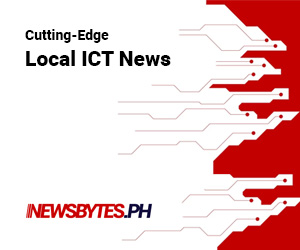PLDT mobile subsidiary Smart Communications is upgrading its cellular network coverage in the Light Rail Transit (LRT) Line 1 as part of a broad initiative to improve the mobile experience of LRT commuters numbering up to 600,000 daily.

Under the program, Smart will beef up its 2G, 3G, and 4G network coverage in LRT-1. State-of-the-art equipment is being deployed at the stations and platforms, inside the coaches, and along the tracks. It will also install carrier-grade Smart Wi-Fi in the 20 stations and platforms, and eventually inside the coaches.
Similar network improvements are also underway for both LRT2 and MRT3. All these initiatives form part of a major network expansion in Metro Manila to improve the overall quality of service available to Smart, TNT, and Sun subscribers.
?The LRT1 upgrade is part of Smart?s extensive network modernization program to provide consistent and reliable voice, SMS, and mobile data, particularly LTE (Long Term Evolution) services to our subscribers,? said Joachim Horn, chief technology and integration advisor at PLDT and Smart.
Smart has also enhanced its coverage inside the LRT1 depot in Pasay City, to better serve Smart subscribers working for the Light Rail Manila Corp. (LRMC), which operates the line. LTE speeds have since gone up to 25mbps outside the depot, and 12mbps inside.
The network upgrade in LRT-1 comes as LRMC, which is partly owned by Metro Pacific Investments Corp. (MPIC), an affiliate of Smart, is also rehabilitating the oldest of the three elevated trains serving Metro Manila.
The rehabilitation includes the modernization of its 20 stations, and the extension of the existing line from Roosevelt Avenue in Quezon City to Baclaran in Pasay City to Bacoor, Cavite.
The LRT-1 project is a component of the PLDT Group?s network modernization across its wired and wireless businesses, to improve the quality of its services particularly for mobile data.
The LRT-1 project is a component of the PLDT Group?s massive network modernization across its wired and wireless businesses, to improve the quality of its services particularly for mobile data. Last year, PLDT ramped up its capital expenditure program to $1 billion, with bulk of the budget going to Smart?s network rollout. An additional $100 million was allocated to utilize the new frequencies freed up with the acquisition of San Miguel Corporation?s telco assets.
In the three-year network roll-out plan that parent-company PLDT submitted to the National Telecommunications Commission in July last year, Smart said it will make LTE progressively available to users in 1,551 cities and municipalities across the country by end-2018 amid expectations of higher data usage.
For Metro Manila, Smart is looking to quadruple its indoor LTE coverage and double its indoor 3G coverage by deploying new base station equipment in about 2,500 cell sites that use low frequency bands such as 700 MHz, 850 MHz, and 900 MHz for its LTE and 3G services. These frequency bands cover a larger area and provide better indoor signals.
The rollout also includes deploying high-frequency bands like 1800 MHz and 2100 MHz, to increase the capacity of each Smart cell site to handle more calls, texts, and ever-increasing mobile data traffic.



